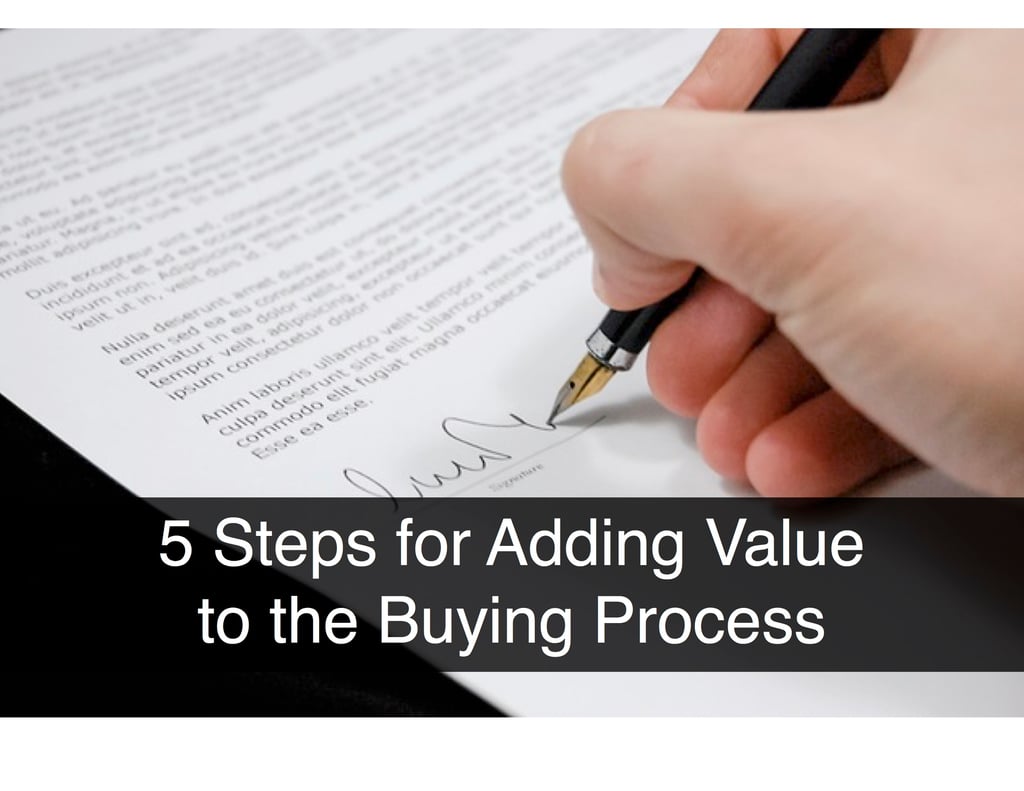 Buyers go through a natural process when deciding to invest in a technology solution. The most successful sales approaches guide customers through that process quickly, confidently, and collaboratively.
Buyers go through a natural process when deciding to invest in a technology solution. The most successful sales approaches guide customers through that process quickly, confidently, and collaboratively.
Top salespeople understand the importance of focusing on the value and potential benefits of your solution. When customers get lost in features and functions, these reps educate, communicate, and quantify how their product changes and improves business performance.
The Challenger Sale is a great model for leading prospects through the buying process. It dovetails nicely with our 5-step approach to communicating the value of your solution every step of the way. Here’s how you can challenge buyer assumptions to educate, persuade, and help close the deal.
Step 1: Acknowledge the Problem
Buyers become aware of problems in many ways: poor results, unhappy customers, even frustrated employees. Perhaps a manager relates to a situation in an industry article. Or an executive realizes they are not in sync with their peers after a networking event. Until someone in the organization acknowledges that something is broken and needs to be fixed, it’s hard to make the case for change.
A Challenger sales rep plays an important role in the buying process by highlighting one or more problems that exist in the business, and by discussing the potential impact of leaving them unsolved. Although this puts the customer in an uncomfortable position, it gives the rep an opportunity to demonstrate their understanding of the problems, and share how other companies have solved them. A benchmarking and assessment tool can be helpful here as it illuminates the problem with accurate, objective data. More importantly, this data can help you reframe the problem and surprise customers with a new perspective they had not previously considered.
Step 2: Research How to Solve the Problem
Buyers often conduct their own research before bringing a vendor into the conversation. The internet is full of articles, blog posts, and commercial websites that can help identify potential solutions to their problems.
When a customer doesn’t recognize just how big the problem is, a value calculator can be helpful. You may also encounter customers who believe their issues are unique; that the usual solutions don’t apply to them. Here again, your sales team can challenge their belief by demonstrating how you have successfully solved diverse issues for other customers.
Helping customers clarify and quantify the problem, makes them more receptive to exploring solutions that address their specific concerns. With your team guiding them through the value selling process, the customer is more likely to end up with a solution that solves both short- and long-term issues.
Step 3: Evaluate Options
Once a prospect determines that they have a problem and that the problem is big enough to worry about, they begin to evaluate solution options. For larger, more complex problems, companies may form a buying committee to dissect the alternatives presented by different vendors. While this will likely slow the process, it also gives diverse stakeholders within the organization a vested interest in choosing the most beneficial overall solution.
Typical exercises include:
- Issuing a Request for Proposal
- Scheduling demos and presentations
- Reading case studies
- Contacting other customers for candid product and vendor assessments.
These one-sided activities tend to focus on checklists of specific features and capabilities, which of course your solution must provide. They also emphasize price and seek to determine whether your solution is cost effective. TCO tools can help in this regard so you can move on to more value-focused conversations.
For example, technology alone doesn’t solve the customer’s problem, but it does create a framework for changing the way the customer operates. In other words, it changes everyone’s behavior in ways that align with organizational goals and make life better. This is the true value of your solution. Your challenge is to shift the conversation from solution capabilities to solution value, and persuade your customer that your solution provides the best value relative to the other options being evaluated.
Step 4: Build a Business Case
This phase of the evaluation process is all about determining if the payback is worth the investment. Your customer knows they have a problem that’s significant enough to solve. They’ve decided how they want to address the problem, and have chosen to focus on your solution. Now it’s time to help them justify its cost and get budget approval to move the deal forward.
You can work with your customer to build a solid business case for your solution with an ROI tool. With input from your customer, you can provide the buying committee with objective data, and your sales team can take an active role in securing budget approval for the purchase.
Step 5: Measure Ongoing Success
Strong customer relationships are built on regular communication and collaboration to ensure your solution delivers optimum value over time. We recommend formally evaluating the success of your solution periodically after implementation, to ensure that the customer is still receiving value.
Customers should evaluate whether the solution has performed as expected. Has it been worth the time, effort, and resources? Is it still the right solution or is some refinement needed to meet shifting requirements? Consider using a value realization tool to measure value delivered and improve customer engagement. It’s a great way to stay connected and remain a valued provider.
Conclusion
While some aspects of the buying process will vary (pilot, technical evaluations, etc.), these five steps are always essential to selling the value of your solution. Your team will build trust and achieve greater sales success by understanding these steps and adding value selling tools into their processes.









